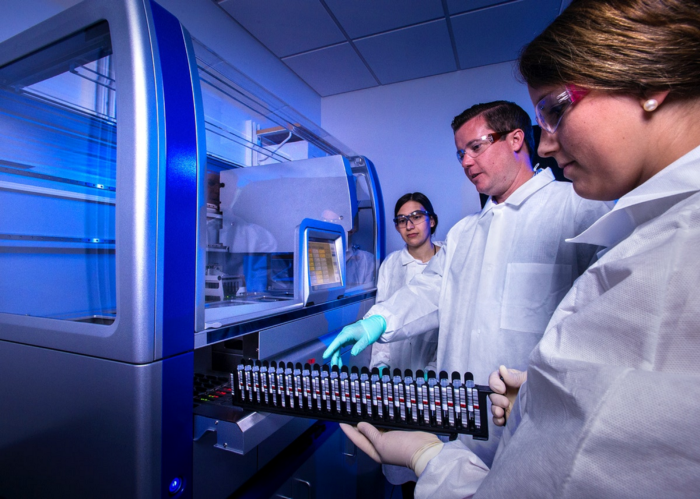In Daniel Susskind’s A World Without Work: Technology, Automation and How We Should Respond published last year, he argues that economic growth is inseparable from automation. Many industries have seen unprecedented growth in productivity in recent decades, and what they had in common was an increase in the degree of automation, with more and more routine or dangerous tasks taken over by robots.
Now, it is time to start harnessing the power of automation in biomedical research. Automating experimental execution helps scientists make better use of their time, enabling them to spend more time on experiment design, data analysis, scientific literature, or teaching. What’s more, machines can also record and capture data in a structured and consistent way, streamlining the data generation and analysis process by eliminating the potential for human error.
Still, despite the promising precedent from other sectors and industries, there can always be room for scepticism, usually linked to a distrust of the unknown — and how many biomedical scientists have worked with robots before? So, we thought to address some of the most common myths surrounding automation in our sector, shedding some further light on how research is rapidly evolving.
1. Automation is just for high-throughput screening
While high-throughput screening is the first example that comes to mind when thinking of how automation can speed up research, it isn’t the only one by far. Over the past few years, it has become possible to automate a broad variety of assays and experiments such as PCR, Western blotting, cell culture, DNA extraction and sequencing, etc.
2. Automation is too costly for small biotech and academic labs, and can only be afforded by big-pharma
Buying and maintaining sophisticated automation infrastructure is simply unaffordable for most biotech companies and publicly funded research organisations. However, over the past few years, so-called cloud laboratories have emerged that fill this gap. Arctoris, Emerald Cloud Labs, and Transcriptic/Strateos provide access to remote experimentation conducted by robotics. In some ways, using a cloud lab is similar to e.g. outsourcing automated DNA sequencing, which is practically never done in-house anymore.
3. Current technology only allows the automation of a small number of standardised procedures or experiments
This is closely linked to the image we have in our minds of conveyor belts and mass production. But in reality, automation can be flexible and modular. The workflows on the latest robotic systems running biomedical experiments can be fully customised and programmed to create bespoke automated workflows. Scientists can choose from hundreds of assay types and adjust them to their specific scientific needs and requirements. And while the robots will execute the specified experiments with super-human precision and accuracy, the researchers themselves are free to think about and choose the cell lines, genes or proteins of interest, the conditions, readout and timings — in other words, to direct and control the research.
4. Working with a cloud lab will require coding skills
Not any more! For the first generation of cloud labs, it was indeed necessary to learn how to code experiments, but the second generation, such as Arctoris, does it differently: experiment planning is done via an intuitive, interactive online interface, with guidance by scientific experts available at all times. This interface provides full control over the different parameters for each experiment, such as cell lines, genes/ proteins of interest, assay types, timings, etc. all of which can be selected from pre-populated drop-down menus. In other words, any researcher can configure their next experiment in less than 5 minutes — to then have the robots take over the actual experimentation.
5. Are scientists at risk of being replaced by a robot?
No — it’s not about replacing researchers, it’s about augmenting them. Automating experiment execution helps researchers to generate larger amounts of reliable, reproducible results faster while creating time for higher-value tasks. Using automated research infrastructure also means getting access to a wide portfolio of pre-validated and fully established methods and techniques — especially beneficial for scientists who are supported by short-term grants, and cannot afford to lose 6 months to try and master a new lab technique. Cloud labs make sure scientists are not inundated with repetitive manual work, but instead they are in the driver seat of research, directing their projects with human intelligence and ingenuity.

We hope you found this blog helpful — going against preconceived notions is never easy, especially when they are deeply ingrained, such as our views of machines and robots. However, we believe that automation is the key to making our lives more fulfilling and more productive, especially in a field as important as biomedical research. If you have any other concerns or questions — or you would just like to share your thoughts on the subject — we would love to hear from you in the comments!